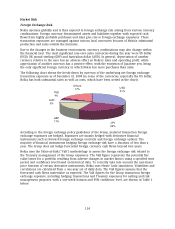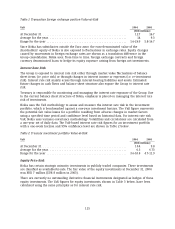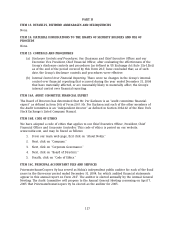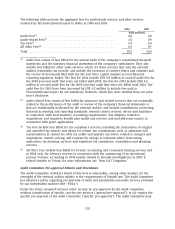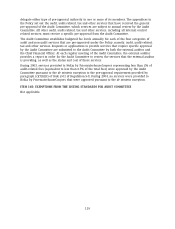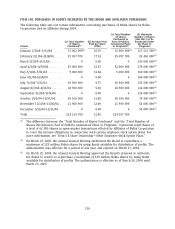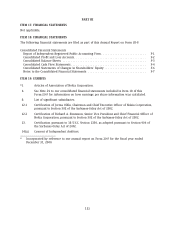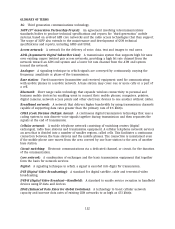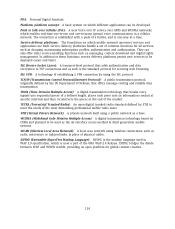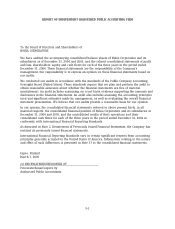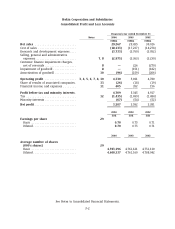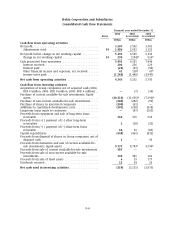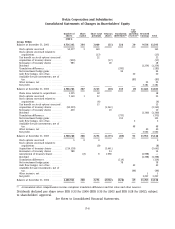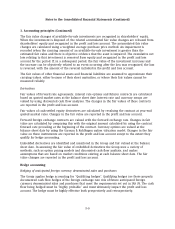Nokia 2004 Annual Report Download - page 125
Download and view the complete annual report
Please find page 125 of the 2004 Nokia annual report below. You can navigate through the pages in the report by either clicking on the pages listed below, or by using the keyword search tool below to find specific information within the annual report.PDA:
Personal Digital Assistant.
Platform, platform concept:
A basic system on which different applications can be developed.
Push to talk over Cellular (PoC):
A new Voice over IP service over GPRS and WCDMA networks,
which enables real-time one-to-one and one-to-many (group) voice communication in a cellular
network. The connection is established with a push of a button, and is one-way at a time.
Service delivery platforms:
The foundation on which mobile network operators’ services and
applications are built. Service delivery platforms handle a set of common functions for all services,
such as charging, maintaining subscription profiles, authentication and authorization. They can
also offer other service-enabling functions such as messaging, content download and digital rights
management. In addition to these functions, service delivery platforms permit new services to be
deployed easier and faster.
SSL (Secure Socket Layer):
A transport-level protocol that adds authentication and data
encryption to TCP connections and as such is the standard protocol for securing web browsing.
SSL VPN:
A technology of establishing a VPN connection by using the SSL protocol.
TCP/IP (Transmission Control Protocol/Internet Protocol):
A public transmission protocol,
originally defined by the US Department of Defense, that offers message routing and reliable data
transmission.
TDMA (Time Division Multiple Access):
A digital transmission technology that breaks voice
signals into sequential pieces of a defined length, places each piece into an information conduit at
specific intervals and then reconstructs the pieces at the end of the conduit.
TETRA (Terrestrial Trunked Radio):
An open digital trunked radio standard defined by ETSI to
meet the needs of the most demanding professional mobile radio users.
VPN (Virtual Private Network):
A private network built using a public network as a base.
WCDMA (Wideband Code Division Multiple Access):
A digital transmission technology based on
CDMA and planned to be used as the air interface access method in third generation mobile
systems.
WLAN (Wireless Local Area Network):
A local area network using wireless connections, such as
radio, microwave or infrared links, in place of physical cables.
XHTML (Extensible HyperText Markup Language):
XHTML is the markup language used in
WAP 2.0 specification, which is now a part of the OMA WAP 2.0 Release. XHTML bridges the divide
between WAP and WWW worlds, providing an open platform for global content creation.
124


